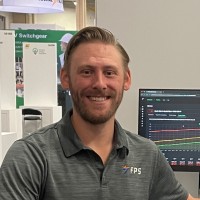

T he Federal Energy Regulatory Commission (FERC) issued a 3-0 directive requiring the Mid-continent Independent System Operator (MISO) to clarify how and when merchant transmission projects will be incorporated into its regional transmission planning process.
For a regional power utility cooperative whose members depend on reliable and cost-effective transmission infrastructure, we view this action as a significant step. Below we provide what the order requires, why it matters for co-ops, and how the staffing dynamics at FERC may influence outcomes.
FERC’s order asks MISO to outline, within 90 days, the manner in which merchant high-voltage direct current (HVDC) transmission projects—which are privately financed and do not rely on cost recovery through traditional ratepayer support—are to be integrated into MISO’s planning models, including base cases and potentially sensitivity analyses.
The complaint which triggered this order was lodged by Invenergy Transmission LLC in August 2022. Invenergy argued that MISO’s previous rules and plans did not properly account for its proposed Grain Belt Express project - an approximately 600 kV, 5 GW transmission line from Kansas to Indiana - potentially leading to duplicate builds or sub-optimal planning.
FERC emphasized that excluding merchant projects from planning carries a risk of "inefficient" investments that drive up costs for consumers.
– when merchant projects will be considered;
– how they will be modeled (e.g., in base cases or sensitivities);
– how information about them will be presented to stakeholders and to MISO’s board.
For a cooperative serving member-owners, a key concern is transmission-planning rigor and cost discipline. Some of the reasons the directive is notable:
If large merchant transmission builds are omitted from regional plans, the planning entity may proceed with other upgrades that duplicate capacity or misallocate resources. That can increase transmission costs that ultimately pass through to end users.
Merchant projects—in many cases HVDC or long-distance lines—can bring new capacity from remote renewables or resources. Incorporating these in planning may better optimize the system and provide opportunities for cooperatives, especially those in MISO territory, to benefit from improved connectivity.
The order signals that FERC expects MISO to provide stakeholders (including cooperatives) and the MISO board with enough modeling detail to assess whether proposed transmission investments are cost-effective.
In the same meeting where this order was issued, FERC Chairman David Rosner noted that the agency’s staffing has fallen by 11 percent this year via voluntary departures (around 175 people out of 1,500).
This reduction raises questions about the agency’s capacity to manage an increasing workload - especially given the growing demand for transmission infrastructure, inter-regional coordination, and complex cost-allocation issues. From our perspective, this is not merely an administrative detail: understaffing could slow reviews, limit stakeholder engagement opportunities, or delay important rulings.
From our vantage point, FERC’s order for MISO to clarify the role of merchant transmission projects underscores the increasing complexity of transmission planning. With more merchant lines, renewable integrations, and regulatory data requirements, utilities are managing larger and more interdependent datasets than ever before. Ensuring that planning models remain accurate, transparent, and compliant now requires strong internal data management and coordination capabilities.
That need makes platforms like Ferro Power Solutions essential. By unifying equipment records, facility ratings, and compliance documentation, such systems help cooperatives maintain consistent, validated data across planning studies and regulatory filings. As FERC and MISO refine their processes, utilities equipped with robust data platforms will be better positioned to adapt, defend their cost positions, and ensure the reliability of their systems for member-owners.
 Christian Hargrave
Co-Founder and CTO at Ferro Power Solutions
Christian Hargrave
Co-Founder and CTO at Ferro Power Solutions
Christian is a seasoned software developer with over a decade of hands-on experience across a wide range of technologies. His background spans modern web frameworks, backend architecture, and cloud platforms, giving him a deep understanding of how innovation shapes today’s digital landscape. In addition to development, Christian actively engages with the latest trends in technology and industry news, offering insights that bridge practical engineering with emerging tech movements.